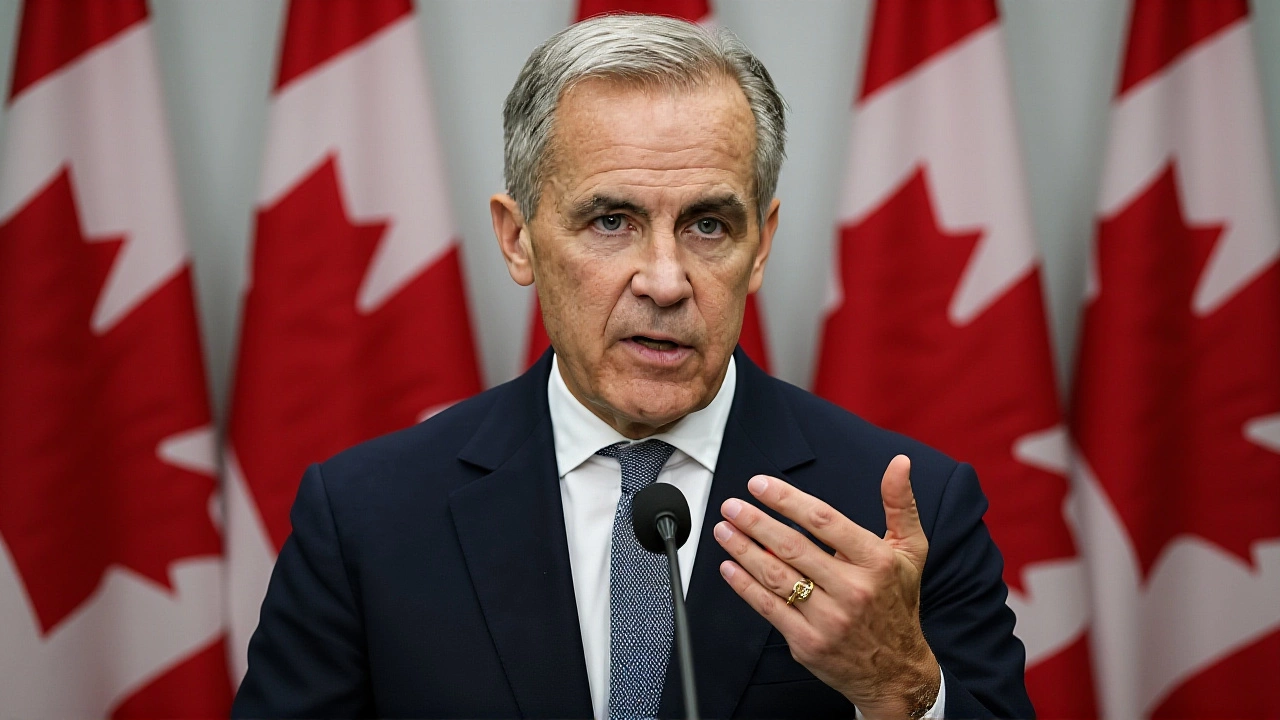On November 4, 2025, Mark Carney stood in the House of Commons in Ottawa and laid out a bold vision: Canada would no longer depend on a single trade partner to survive. The Budget 2025: Canada Strong—delivered by François-Philippe Champagne, Minister of Finance and National Revenue—isn’t just a spending plan. It’s a national reset. With $280 billion in capital spending, the government is betting big on domestic industry, housing, defense, and infrastructure. The deficit? It’s projected to hit $78.3 billion, or 2.5% of GDP. But Carney’s message was clear: Canada Strong means building Canada ourselves.
Why This Budget Is Different
This isn’t another incremental tweak. Budget 2025 is built around the Buy Canadian policy—a directive that will ripple across every major federal program. The Major Projects Office, the Defence Investment Agency, Build Canada Homes, and the Build Communities Strong Fund will all be required to prioritize Canadian-made goods and services. That means steel from Hamilton, turbines from Quebec, and concrete from Saskatchewan will be the default, not the exception. The goal? To shift $1 trillion in private and public investment into Canadian hands over the next five years.It’s a direct response to what Carney called "the limits to Canada’s economic independence," exposed by supply chain chaos, U.S. protectionism, and global instability. When the U.S. passed the Inflation Reduction Act, Canadian manufacturers watched as billions in clean energy investment flowed south. This budget is Ottawa’s counterpunch.
The Mechanics: Spending, Debt, and New Rules
The $280 billion isn’t new money—it’s capital spending, separate from day-to-day operations. For the first time, Canada will track capital and operational budgets independently. The government promises to balance its operating budget within three years, a move that could ease long-term fiscal anxiety. But the debt? It’s rising. $78 billion in new federal debt means roughly $1,900 in additional debt per Canadian, according to the National Post.And here’s the twist: no tax hikes. Not on personal income, corporate profits, or capital gains. Instead, the budget doubles down on targeted incentives. Immediate expensing for equipment purchases is expanded. Clean economy tax credits get a boost. And in a surprising reversal, the government permanently scrapped three controversial proposals: the proposed capital gains increase, the digital services tax, and the Canadian Entrepreneurs’ Incentive. KPMG Canada called it "a calculated gamble on growth over revenue."
Small Business Gets a Lifeline
The $79.9 million over five years for the Small and Medium Business Procurement Program might be the quietest bombshell. Right now, federal contracts are dominated by a handful of big firms. Small businesses—especially those outside Toronto and Vancouver—struggle to navigate the red tape. This program will offer dedicated advisors, simplified bidding, and faster payments. "It’s not about charity," said one Ottawa-based manufacturer who asked not to be named. "It’s about survival. If we can’t win a single federal contract, we can’t hire. And if we can’t hire, we die."The Spelling Quirk That Made Headlines
Oddly enough, the 492-page budget document used British spellings throughout: "organise," "catalyse," "recognise," "harmonise." In Canada, where "color" and "centre" often coexist with "realize" and "organize," this was jarring. House of Commons transcripts, the Charter of Rights and Freedoms, even federal websites—most use American spellings. Why the switch? Officials say it’s "stylistic consistency." Critics call it performative. But it’s a signal: this government wants to be seen as deliberate, even meticulous.
What’s Missing—and Why It Matters
No RRIF withdrawal relief. No tax simplification. No new GST credits. KPMG Canada noted these omissions were intentional. "They’re not trying to buy votes," said a senior analyst. "They’re trying to buy time—to build capacity before the next crisis hits." The budget also doesn’t address housing affordability directly beyond construction incentives. Renters won’t see new subsidies. First-time buyers won’t get a new down payment program. The focus is on supply—not demand. That’s a philosophical choice. And it’s risky. Inflation is still sticky. Interest rates are high. Will businesses invest if consumers can’t spend?What Comes Next
Implementation begins immediately after parliamentary approval. But success hinges on execution. The Defence Investment Agency needs to scale up. The Major Projects Office must cut red tape without cutting safety. And every province will have to play along—especially Alberta and Saskatchewan, where resistance to federal mandates runs deep.Businesses are being told to act fast. KPMG’s advice? "Prioritize agility, investment planning, and public sector partnerships." That means startups should be calling their local MP’s office, not waiting for RFPs. Manufacturers should be touring federal construction sites, not just reading press releases.
The Bigger Picture
This budget isn’t about numbers. It’s about identity. For decades, Canada has been a resource exporter with a side of services. Now, it’s trying to become a manufacturer. A builder. A creator. The stakes? If it works, Canada gains economic sovereignty. If it fails, the country risks becoming a passive player in its own economy."We’re not just spending money," Carney said on November 10. "We’re investing in who we are."
Frequently Asked Questions
How will the Buy Canadian Policy affect small businesses?
The $79.9 million Small and Medium Business Procurement Program will offer dedicated advisors, streamlined bidding, and faster payments to help Canadian SMEs compete for federal contracts. Previously, less than 12% of federal procurement spending went to small businesses. The goal is to raise that to 30% within five years, creating new orders and jobs outside major urban centers.
Why didn’t the budget raise taxes?
The government chose targeted incentives over broad tax changes to encourage private investment. Immediate expensing for equipment and expanded clean energy credits are designed to spur capital spending without burdening households or corporations. The decision to scrap the capital gains increase and digital services tax signals a preference for growth over revenue collection in the short term.
What does the capital budgeting framework change?
For the first time, Canada will separate capital spending (infrastructure, equipment) from operational spending (salaries, services). This allows the government to borrow for long-term investments while promising to balance its day-to-day budget within three years. It’s a shift toward fiscal discipline on recurring costs, even as it increases borrowing for growth.
How will this impact Canada’s relationship with the U.S.?
The policy could create friction, especially as U.S. subsidies under the Inflation Reduction Act continue to draw Canadian clean energy investment south. But Ottawa argues that a stronger domestic industrial base will make Canada a more reliable partner. The goal isn’t to isolate the U.S.—it’s to reduce vulnerability to its policy swings.
Why did the budget use British spellings?
While Canadian English typically blends British and American spellings, the budget’s consistent use of British forms like "catalyse" and "recognise" was likely a deliberate stylistic choice to signal precision and tradition. It’s unusual in official documents, which usually follow American conventions, making it a subtle but noticeable political statement.
What happens if the private sector doesn’t respond?
If businesses don’t step up, the government may need to increase direct funding or use regulatory tools to compel participation. KPMG warns that delays in investment planning could stall projects. The budget’s success hinges on trust—between government and industry, and between Ottawa and provincial leaders. Without that, the $1 trillion goal becomes a fantasy.


